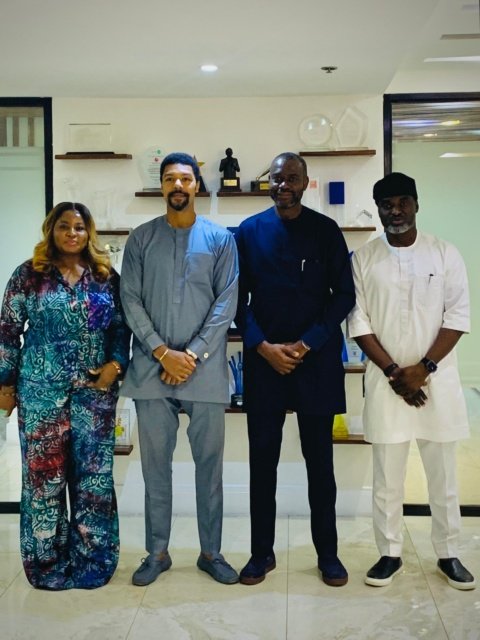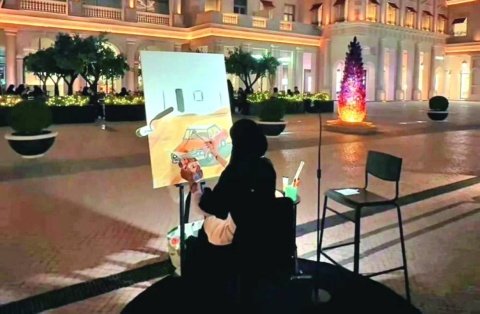How did a kid who drew comic books in Békéscsaba find himself exhibiting/selling out his paintings on the other side of the world in Art Taipei? How did a drummer who played in and made music videos for underground rock bands in Budapest get to hang his art in San Francisco’s famous White Wall Gallery alongside MC Escher and Don Ed Hardy? How did a young lad heading towards a career in landscape design get Jack Hirschman to write the preface to his book? And what if these three lads were all the one lad?
This was a story I had to hear. The story of Hungarian artist Tibor Simon-Mazula.
“The person who enjoys art and the person who makes art, they meet through a painting.” As I listened to him speak, I flashed through the art on my walls. I had met most of the artists, in person. And knowing something of the heart behind the hand that held the paintbrush makes a difference.
We were sitting in his studio in Nyolcésfél on Nemet utca in Budapest’s eighth district talking about his work, his life, his passion. “I have to paint”, he said. “It’s a compulsion.”
It wasn’t always so.
As a kid, in Békéscsaba, Tibor used to draw comic books. In school, he studied maths, biology, and drawing. And while he illustrated his school newsletter, he didn’t go on to study art.

Not for a while.
Instead, he moved to Budapest to study to be a Landscape Designer, a career at the intersection of his three chosen subjects. It took just a year for him to realise this wasn’t what he wanted his future to be. He went to Szeged to study for a teaching degree in Fine Arts specialising in Visual Arts and Maths. He joined a young artists association, exhibited in local exhibitions, and regularly took part in an art camp in Serbia in the late 90s.
After graduating, he went home to Békéscsaba to teach Maths and Art. There he played drums for an underground rock band and made an animated music video Grace which won a prize in Canada and was screened in independent/underground places around the world including Vancouver, New York, Los Angeles, Luxembourg, and Tel Aviv. But it wasn’t enough.
The dawn of the twenty-first century saw his life take another turn. He quit teaching and got into computer graphics and digital art. He returned to Budapest and spent his time working for a gaming company and making music videos for underground rock bands. He tried his hand at filmmaking, making short films, documentaries, and animation.
He didn’t know it yet, but he was in the research phase of his life. Everything about art attracted him. Art is in his blood. “My parents both loved art. My mum would buy a new painting rather than a new car. I was brought up to see all forms of art as important.” He wanted to explore all aspects of visual art. This journey would take seven years and find him in Dubai.
With his wife (and muse) Diana (a photographer and social worker), he moved to the Emirates on a short-term contract as a Creative Director with a Hungarian3D design team. There, life as he knew it, turned on its head.
Like most of us born and raised in Europe, Tibor saw the world through a western lens. What he saw in Dubai made him question everything. The extremes shook him to his core – the wealth and the poverty, the palaces and the workcamps, the somebodies and the nobodies. Jarred by the spate of suicides among those working as slave labour when they lost their indentured jobs, he and a friend made a short film to highlight their plight.
While in Dubai, he started to paint again. He joined forces with a gallery, exhibiting and selling his work. But two years working in a system where the colour of your passport rather than the quality of your work determines how far you could progress would dent the strongest of souls.
The couple decided to move on, finding the antithesis of what was Dubai in San Francisco, where the East and West met up with South and Central America, culturally at least. Tibor applied to the Academy of Art University for his MFA. They were lucky. They hit San Francisco as the city’s affordability factor was ebbing. For the next seven years, they immersed themselves in a burgeoning art scene, mixing with second-generation beat poets and BoHo North Beach set; emerging artists from Taiwan, South Korea, and Japan; and art students from Belize, Venezuela, and Costa Rica.
Made nearly homeless with the massive rent hikes of 2012, they were saved by an art-loving couple who rented them a floor in their house at pre-2012 rates. In 2013, the Academy of Art University, the biggest private art school in the USA at the time, selected him as that year’s Emerging Artist and offered him a professionally designed two-month solo exhibition at which 10 of the 16 exhibited pieces sold.
As an artist, he was on the map.
Although Tibor had learned from teachers in Szeged who had grown up in the world of social realism and figurative art, and given his Maths background, his art is quite traditional in terms of lines and light and colours. And yet, his work was embraced by the Street Art scene. He exhibited alongside such famous street artists as Ben Eine and Plastic Jesus.
He asked how much I knew about art under communism. About as much as I know about art in general, I said: very little.

Back then, there were three levels of art, the three Ts culture – tiltott, tűrt, támogatott. Art was forbidden, tolerated, or supported. While geometrical abstract art with a folk-art bent was tolerated, pure/expressive abstract art was seen as rebellious.
I asked why his work is so popular with collectors from Seoul, Taiwan, and Japan and less known in Europe? “I can’t say for certain, but I suspect because it’s rooted in traditional knowledge. There’s a sensitivity with the subject and colour. And a flavour of Renaissance geometric construction when it comes to structure, space, light, and composition.”
It takes him one or two years to prepare for a show. Sixteen pieces, he says, is a nice number, covering the size spread of small, medium, and large. The biggest piece he’s done is 220 x 170. Looking around his studio he said, “That’s about as big as I can get.”
Some fly out of him in a matter of a week or two. Others take months, if not years. He usually works on three or four pieces in parallel. He treats his own canvasses. The smooth commercial canvases don’t do it for him. “Perfection,” he says, “isn’t always good.” He makes his own paint, too, mixing pigments with oils and dusts (bone and marble). “Paint is expensive”, he shrugged.
I asked how difficult it is to make a living out of art. “When I have a good year (his last exhibition sold well), I can afford to be a full-time artist. When I don’t, then I get a job.” Those seven years of research paid off. Creative director. Digital artist. Teacher. Graphic designer. Cinematographer. This is what he can do when he’s not painting.
I asked if he had a favourite piece. He does. It’s called The View 2015. It’s still in San Francisco but it might make it home eventually. It’s the most travelled of his work. It’s the one that won him a place in the highly competitive Bombay Sapphire Artisan Series final, the one that gilded his invitation to the street art world. “They saw something in this painting”, he said.
I asked how attached he got to his paintings and if it was hard to let them go. ‘Paintings are personal, he said. They’re not for decoration. It’s a little sad when a gallery sells a piece to someone I don’t know. Then it’s gone.” His piece Dream has been bought by a new museum in Korea, so he can see it whenever he wants. He knows where his most important pieces are hanging. So they’re still his, in a way.
I have my eye on one of his pieces and I’d be happy to share.
To quote Jack Hirschman: “In an age of brash and brazenly neonic paintings mirroring the shallowest glitter – not By Me but Buy Me – pitch of time of intense consumerism, the subtle magnificence of a painter like Tibor Simon-Mazula – a REAL painter – speaks to the heart and soul of the imaginative organ called the Eyes.”
Mary Murphy is a freelance writer, copyeditor, blogger, and communications trainer. Read more at www.unpackingmybottomdrawer.com | www.anyexcusetotravel.com | www.dyingtogetin.com


